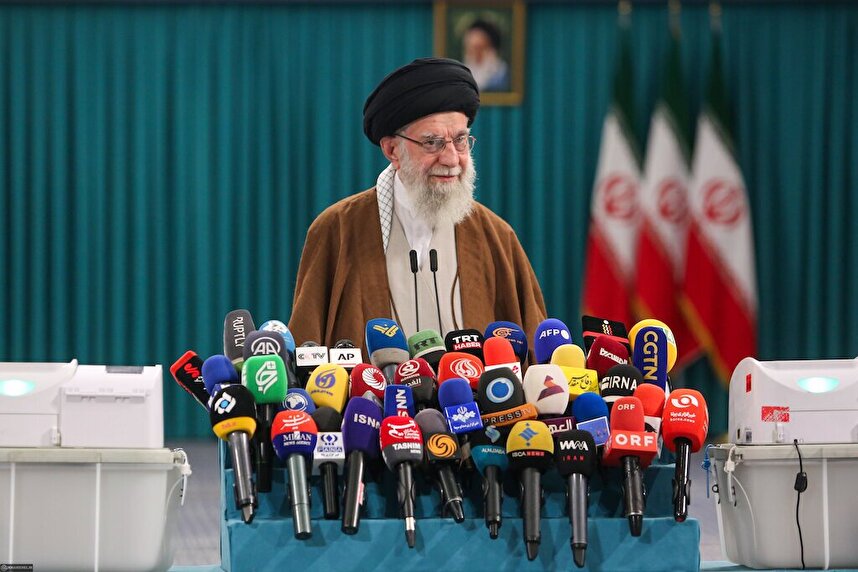- Constitutional Council spokesman visits Tehran Times anniversary exhibition
- ‘A Historic Day and A Valuable Legacy for Resistance’
- Spokesperson criticizes international community's inaction over US, Israel’s atrocities
- Right to resistance a legitimate struggle for liberation from domination: Tahan Nazif
Polls open in Iran's parliamentary runoff, Leader casts vote
The voting began at 22 constituencies in 15 provinces at 8 a.m. local time (0430 GMT) on Friday. A total of 90 candidates compete for the remaining seats. In eight constituencies, including Tehran, this round of election is being held in an all-electronic format.

Leader of the Islamic Revolution Ayatollah Seyed Ali Khamenei cast his ballot at a polling station in Tehran in the first minutes of voting, calling on all to participate in the second round for “a stronger parliament”.
“It is the national duty of any person who wishes for the progress of his or her country to participate in the elections. The importance of the second round [of the election] is not less than the first one, and God willing, our beloved people will all participate [in the election], vote and complete the parliament,” the Leader stated.
“The more votes there are, the stronger the parliament will be, and the stronger the parliament, the more opportunities there will be for work in the country.”
Earlier on March 1, the country held parliamentary Assembly of Experts elections. The polls opened across Iran at 8 a.m. local time (0430) on Friday for parliamentary and Assembly of Experts elections.
More than 61 million people were eligible to vote.
About 15,000 parliamentary candidates were vying for 290 seats for a four-year term.
Simultaneously, people voted for 88 members of the Assembly of Experts, a body in charge of overseeing the performance of the Leader of the Islamic Revolution. Candidates for the assembly are elected for an eight-year term.